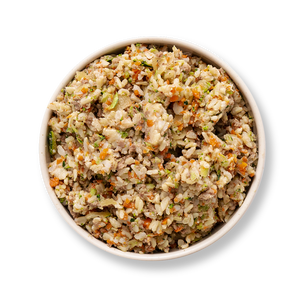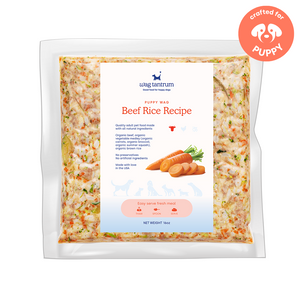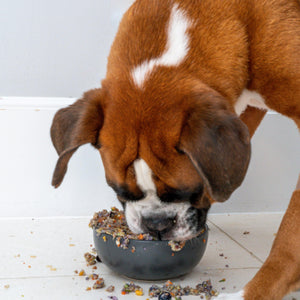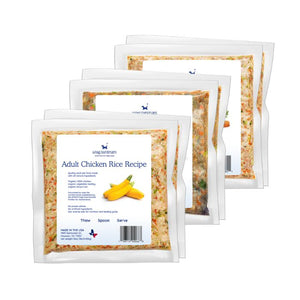How to Help Your Dog When the Air Quality Is Bad
How to Help Your Dog When the Air Quality Is Bad: Fresh Food and Care Tips
When the air quality takes a turn for the worse—whether due to pollution, wildfires, or seasonal changes—it’s not just humans who feel the effects. Our furry friends can also be vulnerable to the negative impacts of poor air quality, especially when it comes to their respiratory health and overall well-being. But there are proactive steps you can take to help your dog feel better, and one of the most important areas to focus on is their diet. Here’s how fresh dog foods, pet food delivery services, and real food for dogs can support your pup during bad air quality days.
1. Choose Fresh, Nutritious Dog Foods
When the air quality is bad, it’s crucial to boost your dog’s immune system and overall health. Fresh dog foods are a great option to support your dog’s health during these times. Unlike processed kibble, fresh dog foods are made from high-quality, whole ingredients that are nutrient-dense and free of artificial preservatives, fillers, and chemicals. These real foods can give your dog the vitamins, minerals, and antioxidants they need to maintain a strong immune system, which is essential when the air is full of irritants.
Ingredients like fresh vegetables, lean meats, and nutrient-rich oils (such as omega-3 fatty acids) help reduce inflammation and support overall wellness. Additionally, a diet rich in antioxidants can support your dog’s respiratory system and help minimize the effects of pollution or allergens.
2. Pet Food Delivery Services: Convenience Meets Health
With poor air quality often meaning less outdoor time for your dog, you may find yourself more focused on making sure they’re comfortable indoors. One of the best ways to ensure your dog is getting the best nutrition is to take advantage of pet food delivery companies. These services often offer subscription-based deliveries of high-quality fresh food, so you don’t have to worry about running out of supplies or making a trip to the store.
By using these services, you can easily find dog food that matches your pet’s specific dietary needs, and you won’t have to worry about rushing to purchase low-quality options when air quality worsens. Many pet food delivery companies allow you to customize your orders based on your dog's preferences, age, and health conditions, ensuring they get the perfect balance of nutrients.
3. Real Food for Dogs: A Holistic Approach to Wellness
When the air quality is bad, it’s more important than ever to feed your dog real food that supports their overall health. Fresh, whole-food ingredients provide essential nutrition without relying on preservatives or artificial additives, which can cause stress on your dog’s body. Opting for real food for dogs that’s made with clean, recognizable ingredients (like chicken, beef, turkey, or salmon, along with whole vegetables and grains) will support your dog’s immune system and help reduce inflammation in their lungs and airways.
Additionally, real food is more easily digestible, meaning your dog’s body can absorb nutrients faster. This can be especially important when they need to stay strong and healthy during times of environmental stress, like during wildfires or pollution spikes.
4. Provide Adequate Hydration
While fresh food plays a key role in your dog’s diet, it's also important to keep them well-hydrated, especially when air quality is poor. Dehydration can aggravate respiratory issues, so make sure your dog has constant access to fresh water. Some fresh dog food delivery services also offer wet food options, which can help with hydration and provide added moisture to your dog’s meals.
5. Limit Outdoor Exposure During Poor Air Quality
Sometimes, the best way to help your dog is to limit their exposure to harmful air. If the air quality is especially bad, try to keep your dog indoors as much as possible. If your dog needs exercise, consider indoor activities like puzzle toys, scent games, or short training sessions to keep their mind engaged without the risk of exposure to harmful pollutants.
If your dog does need to go outside, try to walk them during times when the air quality improves slightly, such as in the early morning or evening, when the levels may be lower.
6. Watch for Symptoms of Respiratory Distress
If your dog is showing signs of difficulty breathing, coughing, or nasal discharge, it could be a reaction to the poor air quality. Fresh food can help support their immune system, but if your dog is experiencing severe symptoms, it’s important to contact your vet for advice or treatment.
Conclusion: Feeding Your Dog Right During Bad Air Quality
Good nutrition is an essential part of helping your dog stay healthy, especially when the air quality is poor. Opting for fresh dog foods, utilizing pet food delivery companies for convenience, and focusing on real food for dogs can all support your dog’s health and immune system during times of environmental stress. Remember to also keep them indoors as much as possible and provide plenty of fresh water. With the right approach, you can help your dog thrive—even when the air outside isn’t at its best.








